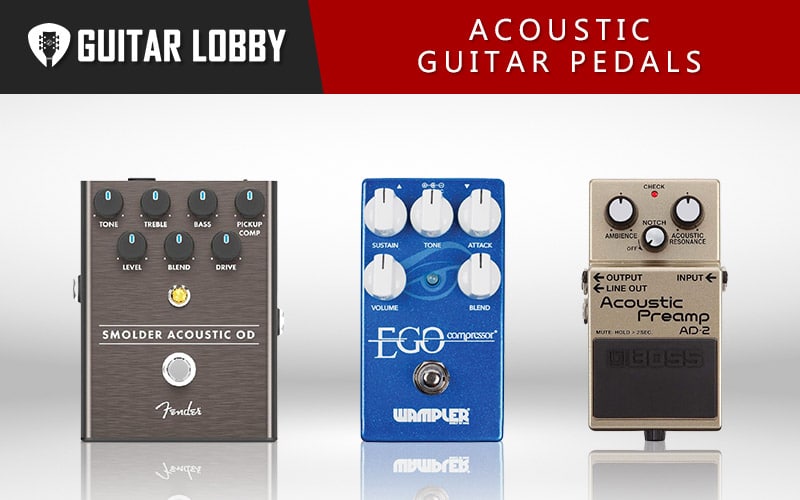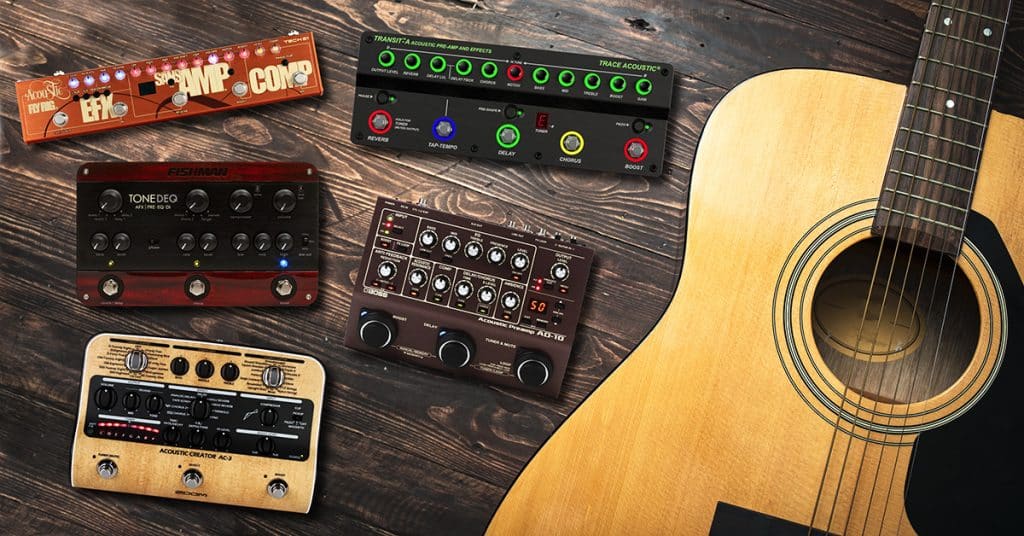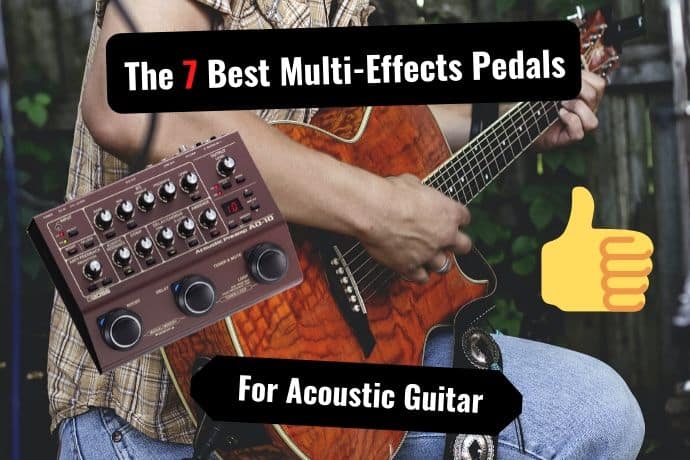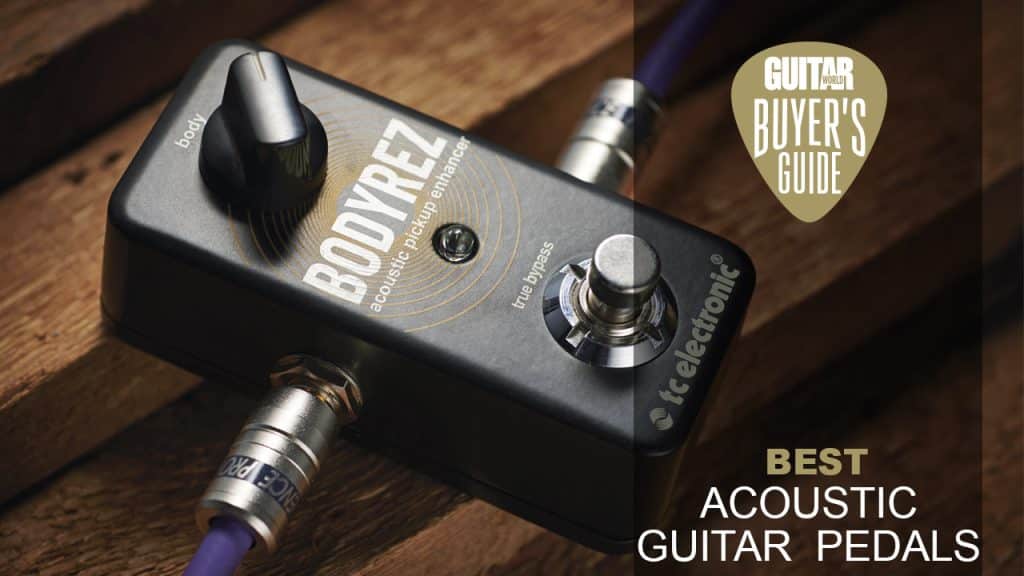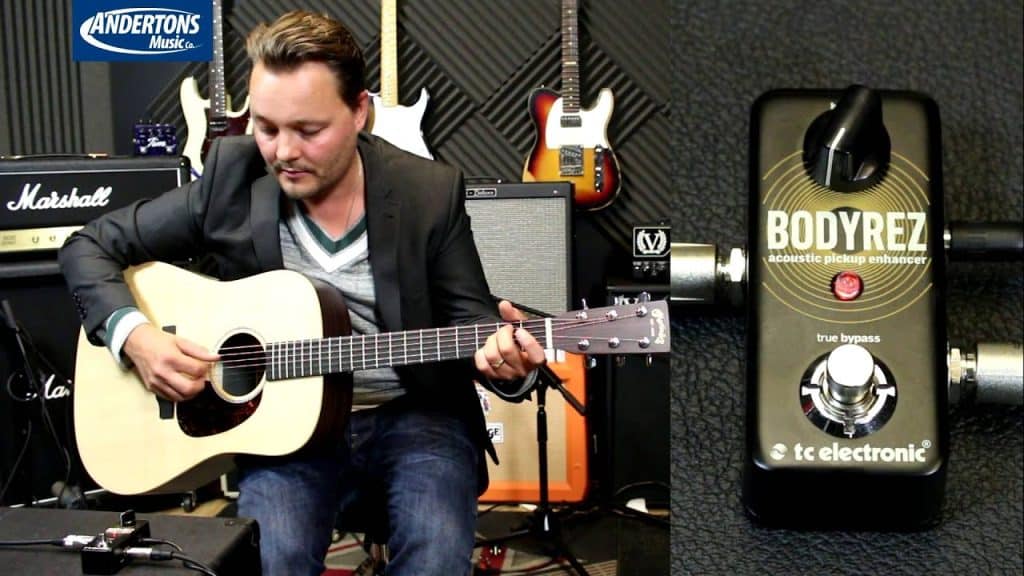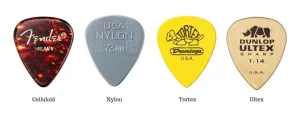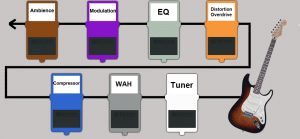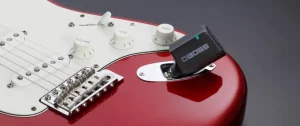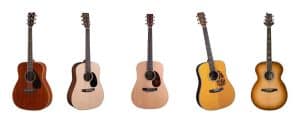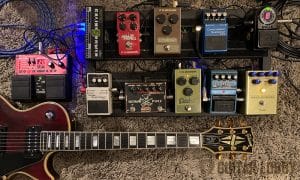You love playing your acoustic guitar, but sometimes you wish you could enhance its sound and take it to the next level. Well, look no further because we have compiled a list of the top 10 pedals that will do just that. Whether you’re a seasoned musician or just starting out, these pedals are sure to bring a whole new dimension to your acoustic playing. From reverb to compression, each pedal on this list has been carefully selected to help you achieve the perfect sound for your acoustic guitar. So, without further ado, let’s dive into the world of pedal magic and discover the best ones for enhancing your acoustic guitar sound.
1. Reverb Pedals
Reverb pedals are a must-have for acoustic guitar players looking to add depth and dimension to their sound. Whether you’re playing in a small room or a large concert hall, reverb pedals can simulate the natural reverberation of different spaces.
1.1 Spring Reverb
One of the most popular types of reverb pedals is the spring reverb. This type of reverb gets its name from the mechanical springs that are used to generate the reverberation effect. Spring reverbs are known for their warm and vintage sound, making them a great choice for players who want to add a touch of nostalgia to their acoustic guitar sound.
1.2 Hall Reverb
Hall reverbs are designed to replicate the sound of playing in a concert hall or large auditorium. These pedals provide a spacious and natural-sounding reverb that can enhance the resonance and sustain of your acoustic guitar. Hall reverb pedals are often favored by professional acoustic guitarists who perform in larger venues and want to create a immersive and ambient sound.
1.3 Plate Reverb
Plate reverb pedals use a metal plate to create the reverberation effect. The vibrations from your acoustic guitar signal cause the metal plate to resonate, producing a rich and dense reverb. Plate reverbs are known for their smooth and lush sound, and they are particularly well-suited for adding a touch of depth and shimmer to your acoustic guitar sound.
2. Delay Pedals
Delay pedals are another essential tool for acoustic guitar players. These pedals create repetitions of your guitar signal, providing a unique echo effect that can add dimension and texture to your playing.
2.1 Analog Delay
Analog delay pedals emulate the classic sound of vintage tape echo machines. They produce warm, dark, and slightly distorted repeats that can add a touch of nostalgia and character to your acoustic guitar sound. Analog delay pedals are favored by many acoustic guitar players for their organic and natural-sounding echoes.
2.2 Digital Delay
Digital delay pedals, on the other hand, use advanced digital processing to create precise and clean repeats of your guitar signal. These pedals offer a wide range of delay time settings, allowing you to dial in anything from short slap-back echoes to long and expansive delays. Digital delay pedals are known for their clarity and versatility, making them a popular choice for acoustic guitarists in various genres.
2.3 Tape Delay
Tape delay pedals simulate the sound of vintage tape echo machines, similar to analog delay pedals. However, tape delay pedals often offer additional features such as adjustable tape speed and saturation, allowing you to create unique and tape-like effects. These pedals are beloved by acoustic guitar players looking to recreate the warm and saturated sound of classic tape echo units.
3. Chorus Pedals
Chorus pedals are commonly used by acoustic guitar players to create a shimmering and lush sound. By splitting your guitar signal and introducing slight pitch modulation, chorus pedals can simulate the sound of multiple guitars playing at the same time.
3.1 Analog Chorus
Analog chorus pedals produce a warm and rich modulation effect that emulates the sound of vintage analog chorus units. These pedals add a subtle and natural-sounding modulation to your acoustic guitar sound, creating a sense of depth and movement. Analog chorus pedals are often praised for their organic and musical character.
3.2 Digital Chorus
Digital chorus pedals use advanced digital processing to create precise and crystal-clear modulation effects. These pedals offer a wide range of chorus sounds, from subtle and gentle modulation to more pronounced and intense effects. Digital chorus pedals are popular among acoustic guitar players who seek precise control over their chorus sound and prefer a cleaner and more modern modulation effect.
3.3 Multi-Modulation Chorus
Multi-modulation chorus pedals combine various modulation effects, such as chorus, flanger, and phaser, into one unit. These pedals provide a range of different modulation sounds, allowing you to experiment and find the perfect chorus effect for your acoustic guitar. Multi-modulation chorus pedals are a fantastic option for acoustic guitarists who want to explore different modulation flavors without investing in multiple pedals.
4. EQ Pedals
EQ pedals are essential for shaping and fine-tuning your acoustic guitar sound. These pedals allow you to adjust specific frequency ranges, boosting or cutting them to achieve the desired tonal balance.
4.1 Graphic EQ
Graphic EQ pedals feature a set of sliders that correspond to different frequency bands. This allows you to easily boost or cut specific frequencies and shape your acoustic guitar’s sound precisely. Graphic EQ pedals are especially useful for live performances where you may need to quickly adjust your tone to compensate for the venue’s acoustics or to match the sound of other instruments.
4.2 Parametric EQ
Parametric EQ pedals offer more precise control over your acoustic guitar’s tone compared to graphic EQ pedals. These pedals allow you to adjust not only specific frequency bands but also the width (Q) and level (gain) of the selected bands. With a parametric EQ, you can target and shape individual frequencies with surgical precision, making it an excellent tool for acoustic guitarists who are particular about their tone.
4.3 Acoustic Preamp EQ
Acoustic preamp EQ pedals combine EQ functionality with other features, such as a built-in preamp and tone shaping options. These pedals are designed specifically for acoustic instruments and provide a comprehensive solution for achieving the best possible tone. With an acoustic preamp EQ pedal, you can shape your acoustic guitar’s sound, boost its signal for increased clarity and volume, and even add effects such as compression or reverb.
5. Compressor Pedals
Compressor pedals are used to even out the dynamic range of your acoustic guitar’s signal. They reduce the volume of louder notes and increase the volume of softer notes, resulting in a more consistent and balanced sound.
5.1 Optical Compressor
Optical compressor pedals use an optical circuit to control the dynamics of your acoustic guitar’s signal. They offer a smooth and transparent compression effect that can enhance sustain and provide a more polished sound. Optical compressors are particularly popular among acoustic guitarists who value subtlety and transparency in their compression.
5.2 Studio Compressor
Studio compressor pedals are designed to emulate the sound and functionality of classic hardware compressors used in professional recording studios. These pedals offer a wide range of compression options, from subtle and transparent compression to more pronounced and characterful compression effects. Studio compressors are favored by acoustic guitar players who want to achieve studio-quality compression in their live performances or recordings.
5.3 Multi-Band Compressor
Multi-band compressor pedals divide your acoustic guitar’s signal into multiple frequency bands and apply independent compression settings to each band. This allows for precise control over the compression of different frequency ranges, resulting in a more transparent and natural-sounding compression effect. Multi-band compressor pedals are often used by acoustic guitarists who want to retain the dynamic range of their playing while still having control over the overall balance and consistency of their sound.
6. Volume Pedals
Volume pedals allow you to control the volume of your acoustic guitar with your foot, offering a hands-free approach that can be useful in various playing situations.
6.1 Passive Volume Pedal
Passive volume pedals do not require any external power source. They are designed to simply control the volume of your acoustic guitar signal as you sweep the pedal up and down. Passive volume pedals are known for their simplicity and transparency, providing a clean and uncolored volume control option for acoustic guitarists.
6.2 Active Volume Pedal
Active volume pedals require a power source and often offer additional features such as tuner outputs, expression pedal functionality, and boost options. These pedals can be used not only for controlling volume but also for shaping the dynamics of your acoustic guitar sound. Active volume pedals are versatile tools that can be a valuable asset for acoustic guitarists who desire more control over their volume levels.
6.3 Stereo Volume Pedal
Stereo volume pedals are designed for acoustic guitarists who use stereo setups, such as dual amplifiers or stereo effects processors. These pedals provide independent volume control for both the left and right channels, allowing you to achieve precise balance and control over your stereo sound. Stereo volume pedals are particularly useful when using stereo modulation effects or for creating immersive soundscapes with panning and spatial effects.
7. Overdrive Pedals
Overdrive pedals are commonly associated with electric guitar players, but they can also be used to enhance the sound of acoustic guitars. These pedals add a touch of saturation and distortion to your acoustic guitar signal, providing more sustain and harmonics.
7.1 Tube Overdrive
Tube overdrive pedals emulate the warm and smooth distortion of vintage tube amplifiers. They add a rich and organic saturation to your acoustic guitar sound, enhancing the natural sweetness and complexity of your instrument. Tube overdrive pedals are often used by acoustic guitarists who want to add a touch of vintage character to their sound.
7.2 Distortion Overdrive
Distortion overdrive pedals offer a more aggressive and intense form of saturation compared to tube overdrive pedals. These pedals can add bite, edge, and grit to your acoustic guitar sound, making them suitable for genres such as rock, punk, or blues. Distortion overdrive pedals provide a wide range of tone shaping options, allowing you to find the perfect level of distortion that suits your playing style.
7.3 Fuzz Overdrive
Fuzz overdrive pedals create a heavily saturated and sustain-rich distortion effect. These pedals are known for their thick and fuzzy tone, which can add a unique and distinct character to your acoustic guitar sound. Fuzz overdrive pedals are favored by experimental acoustic guitarists who want to push the boundaries of traditional acoustic guitar tone and explore new sonic territories.
8. Phaser Pedals
Phaser pedals create a swirling and sweeping modulation effect that can add movement and depth to your acoustic guitar sound. They achieve this by splitting your guitar signal into two channels, modulating one of the channels, and then combining them back together.
8.1 Analog Phaser
Analog phaser pedals emulate the warm and organic sound of vintage phaser units. These pedals produce a lush and swirling modulation effect that adds a touch of vintage character to your acoustic guitar sound. Analog phasers are well-suited for creating subtle and gentle modulation as well as more pronounced and dramatic phasing effects.
8.2 Digital Phaser
Digital phaser pedals use advanced digital processing to create precise and versatile phaser effects. These pedals often offer a range of different phaser algorithms, allowing you to choose from various modulation styles and intensities. Digital phasers are favored by acoustic guitarists who seek precise control over their phaser sound and desire a cleaner and more modern modulation effect.
8.3 Script Phaser
Script phaser pedals aim to replicate the sound and functionality of vintage phaser units that were produced during specific time periods. These pedals meticulously recreate the characteristics and nuances of iconic phasers, offering acoustic guitar players an authentic vintage phaser sound. Script phasers are highly sought after by vintage gear enthusiasts and players who want to capture the magic of classic phaser tones.
9. Acoustic Simulator Pedals
Acoustic simulator pedals are designed specifically for acoustic guitarists who want to achieve the sound and feel of playing an acoustic instrument without having to switch guitars.
9.1 Acoustic Amp Simulator
Acoustic amp simulator pedals emulate the sound of playing your acoustic guitar through a dedicated acoustic amplifier. These pedals modify your electric guitar’s signal to recreate the tonal characteristics of an acoustic guitar, making them a convenient option for players who need to switch between electric and acoustic sounds seamlessly. Acoustic amp simulator pedals often offer additional features such as EQ controls, reverb, and even feedback suppression.
9.2 Acoustic Guitar Pedal
Acoustic guitar pedals are designed to transform the sound of your electric guitar into a convincing acoustic guitar tone. These pedals employ sophisticated algorithms and signal processing techniques to recreate the nuances and dynamics of acoustic instruments. Acoustic guitar pedals are a versatile option for players who want to add the sound of an acoustic guitar to their electric guitar setup or who wish to enhance the tonal capabilities of their electric-acoustic guitar.
10. Looper Pedals
Looper pedals are a fantastic tool for acoustic guitar players who want to create layered compositions or practice and experiment with different musical ideas.
10.1 Basic Looper
Basic looper pedals allow you to record and play back short musical phrases or chord progressions. These pedals typically provide a simple and intuitive user interface, making them easy to use even for beginners. Basic looper pedals are great for capturing short musical ideas, practicing improvisation, or creating simple backing tracks to play along with.
10.2 Multi-Track Looper
Multi-track looper pedals offer more advanced recording and playback capabilities compared to basic loopers. These pedals allow you to record and layer multiple loops, each on its own dedicated track. This feature enables you to create complex compositions with overlapping musical ideas. Multi-track loopers also often come with additional features such as built-in effects, rhythm tracks, and USB connectivity for easier recording and editing.
10.3 Loop Station
Loop station pedals are typically compact and feature-packed loopers that offer a wide range of creative possibilities. These pedals allow you to record, overdub, and manipulate loops in real-time, offering features such as reverse playback, time stretching, and tempo synchronization. Loop station pedals are favored by adventurous acoustic guitarists who want to explore the boundaries of live looping and create mesmerizing layered performances.
With such a wide array of pedals available, acoustic guitar players have endless possibilities to shape and enhance their sound. Whether you’re seeking to add reverberation, delay, modulation, or other effects to your playing, there’s a pedal out there that can help you achieve the desired sound. So go ahead and experiment with different pedals to find the ones that best suit your playing style and take your acoustic guitar sound to new heights. Happy playing!

